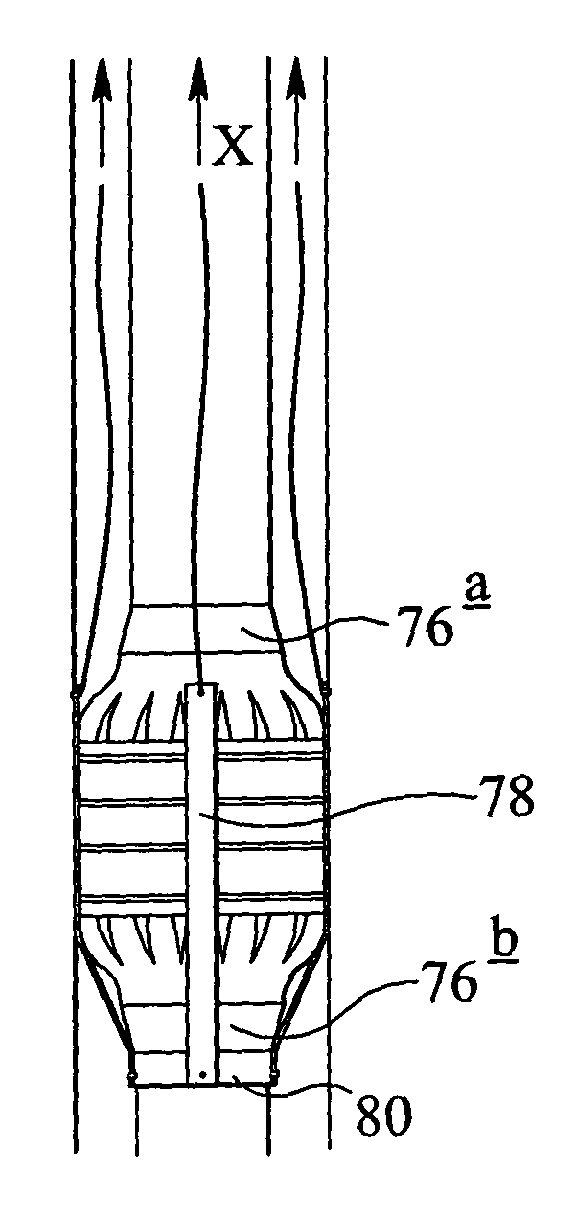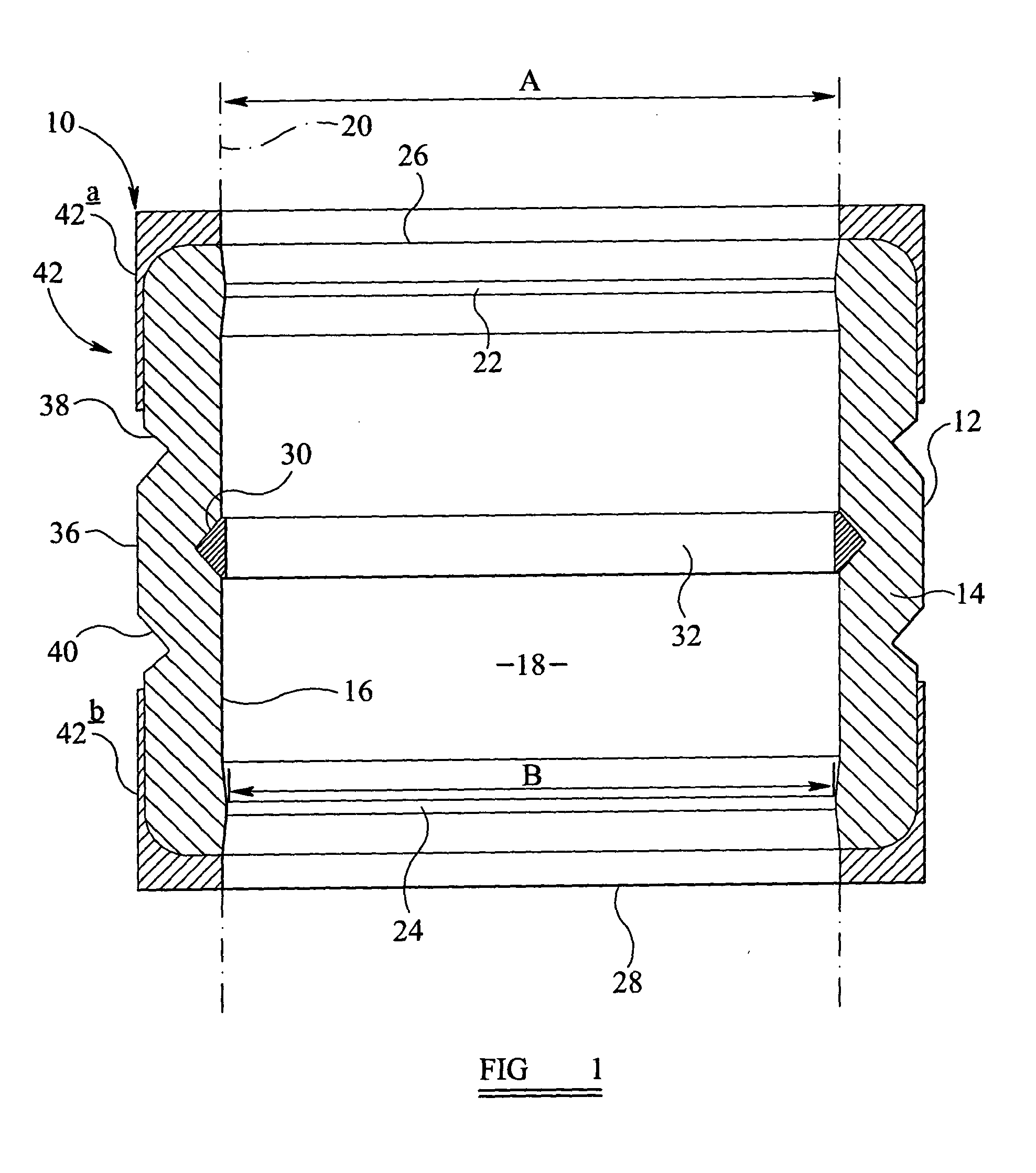Packing element
a packing element and sealing technology, applied in the field of improved packing elements, can solve the problems of affecting the sealing effect of the packing element, the failure of the sealing between the packing element and the casing, and the drawbacks of some conventional packers, and achieve the effect of reducing the setting pressur
- Summary
- Abstract
- Description
- Claims
- Application Information
AI Technical Summary
Benefits of technology
Problems solved by technology
Method used
Image
Examples
first embodiment
[0057]Reference is firstly made to FIG. 1, a section view of a packer generally indicated by reference numeral 10 incorporating an elastomeric sealing element 12 in accordance with the present invention. The packer 10 is shown in a run-in configuration.
[0058]The sealing element 12 comprises an annular body 14 having an internal surface 16 defining a throughbore 18. The internal surface 16 is adapted to engage a mandrel 20 (shown in broken outline), the mandrel 20 having a mandrel diameter “A”. The internal surface 16 defines first and second tapered ridges 22,24, the throughbore diameter “B” at the ridges 22,24 being less than the mandrel diameter “A”. Provision of the ridges 22,24 provides an interference fit between the ridges 22,24 and the mandrel 20. This ensures no voids are present between the mandrel 20 and the element 12 which gives improved control of the element material, especially at high expansion ratios and gives rise to greater stability when pumping high fluid flow r...
second embodiment
[0067]the present invention will now be described with reference FIGS. 7 to 12. As can be seen from FIG. 7, the packer 60 comprises a much longer sealing element 62 adapted to span a much greater well bore annulus 64 between the packer mandrel 66 and the well bore surface 68. The sealing element is provided with six external surface grooves 70a-f and with five internal surface grooves, 72a-e each incorporating an insert ring 74a-e.
[0068]It will be noted that the inner four external surface grooves 70b-70e are located towards the centre of the sealing element 62 and are distanced from the sealing element back-ups 76a,76b. The sealing element back-ups 76a,76b are, therefore, unable to provide leak paths for the fluid trapped between the inner grooves 70b-e. To facilitate drainage of the inner grooves 70b-e, bleed strips 78 are provided (most clearly seen in FIGS. 10 to 12). The bleed strips 78 are pinned to a bleed strip collar 80 and each bleed strip 78 is connected to the surface b...
PUM
 Login to View More
Login to View More Abstract
Description
Claims
Application Information
 Login to View More
Login to View More - R&D
- Intellectual Property
- Life Sciences
- Materials
- Tech Scout
- Unparalleled Data Quality
- Higher Quality Content
- 60% Fewer Hallucinations
Browse by: Latest US Patents, China's latest patents, Technical Efficacy Thesaurus, Application Domain, Technology Topic, Popular Technical Reports.
© 2025 PatSnap. All rights reserved.Legal|Privacy policy|Modern Slavery Act Transparency Statement|Sitemap|About US| Contact US: help@patsnap.com



